De Havilland DH.88 Comet
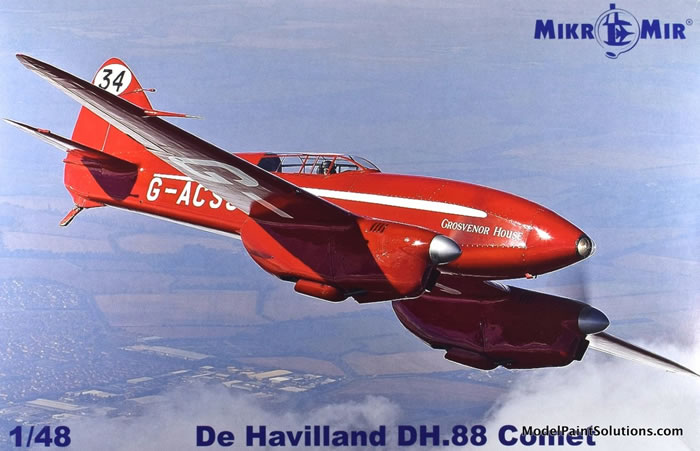
MikroMir, 1/48 scale
S
u m m a r y : |
Description and Item No.: |
MikroMir Kit No. 48-017 - De Havilland DH.88 Comet |
Contents and Media: |
92 parts in grey styrene, 9 clear parts, one extensive PE fret, and one decal sheet with markings for 3 airframes. |
Price: |
GBP£37.99 EU Price (£31.66 Export Price) Plus Shipping from Hannants |
Scale: |
1/48 |
Review Type: |
First Look |
Advantages: |
This is a long-deserved, injection-mold 1/48 DH.88 w/ extensive PE and nice decals. |
Disadvantages: |
Being a limited-run kit, extra effort will be required for parts clean up and assembly. |
Recommendation: |
This is the quintessential “limited-run kit” and will require a fair amount of work and patience to be built. That said, the overall shape looks good, the detail is sufficient for the scale, and the result will be one good-looking model for sure. |
Reviewed by John Miller

Airfix's 1/72 scale Sea King is available online from Squadron.com
The De Havilland DH.88 Comet is a British two-seat, twin-engined aircraft built by the De Havilland Aircraft Company. It was developed specifically to participate in the 1934 England to Australia MacRobertson Air Race.
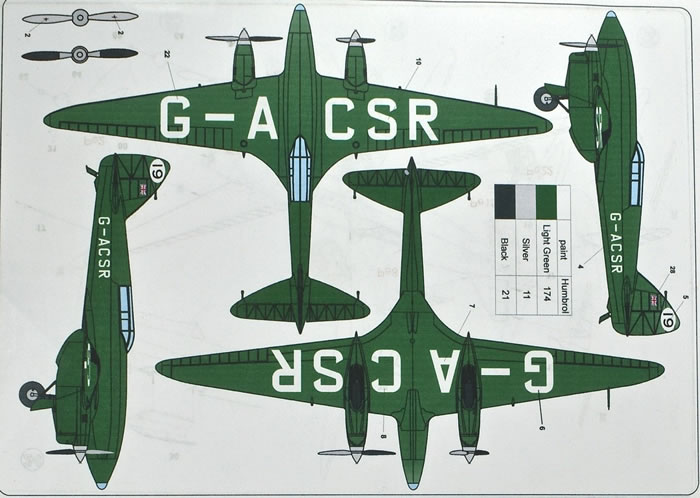
Development of the DH.88 was initiated at the behest of British aviation pioneer Geoffrey de Havilland, along with the support of de Havilland's board; being keen to garner prestige from producing the victorious aircraft as well as to gain from the research involved in producing it. De Havilland’s A. E. Hagg designed the Comet around the specific requirements of the race, producing an innovative design in the form of a stressed-skin cantilever monoplane, complete with an enclosed cockpit, retractable undercarriage, landing flaps, and variable-pitch propellers.
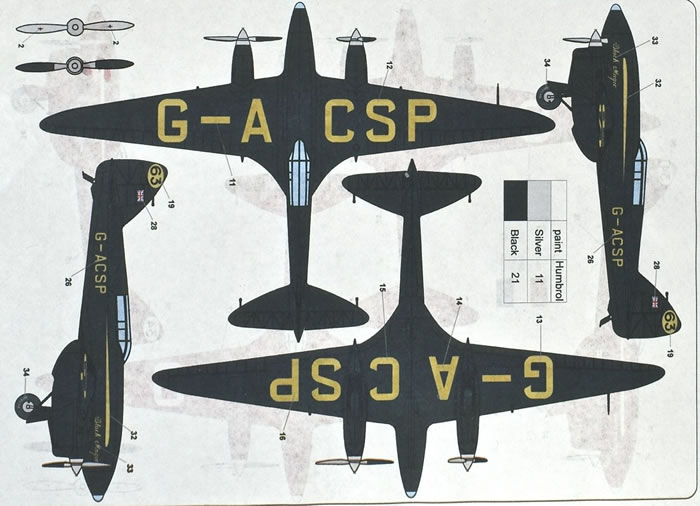
Three Comets (G-ACSS, G-ACSR and G-ACSP) were produced for the race, all for private owners at the discounted price of £5,000 per aircraft. The aircraft underwent a rapid development cycle, performing its maiden flight only six weeks prior to the race. Comet G-ACSS Grosvenor House emerged as the winner. The Comet went on to establish a multitude of aviation records, during both the race and in its aftermath, as well as participating in further races. Several examples were bought and evaluated by national governments, typically as mail planes. Two Comets, G-ACSS and G-ACSP, survived into preservation, while a number of full-scale replicas have also been constructed.
General Characteristics:
- Crew: 2
- Length: 29 ft (8.8 m)
- Wingspan: 44 ft (13 m)
- Height: 10 ft (3.0 m)
- Wing area: 212.5 sq ft (19.74 m2)
- Airfoil: RAF 34
- Empty weight: 2,930 lb (1,329 kg)
- Max takeoff weight: 5,550 lb (2,517 kg)
- Powerplant: 2 × de Havilland Gipsy Six R, 230 hp (170 kW) each air-cooled six-cylinder inverted inline
- Propellers: 2-bladed Ratier
Performance:
- Maximum speed: 237 mph (381 km/h, 206 kn)
- Cruise speed: 220 mph (350 km/h, 190 kn)
- Stall speed: 74 mph (119 km/h, 64 kn)
- Range: 2,925 mi (4,707 km, 2,542 nmi)
- Service ceiling: 19,000 ft (5,800 m)
- Rate of climb: 900 ft/min (4.6 m/s)
The initial impression is one of second generation Special Hobby/MPM. I am a huge fan Special Hobby and have insulated a lot of my shop with their unbuilt kits and have more of same, built, and on display in my cabinet so I mean that as a sincere compliment. That said, it also indicates that this is a limited-production kit that lacks the fidelity of a Tamigawa and will require extra effort to get the most out of what’s in the box.
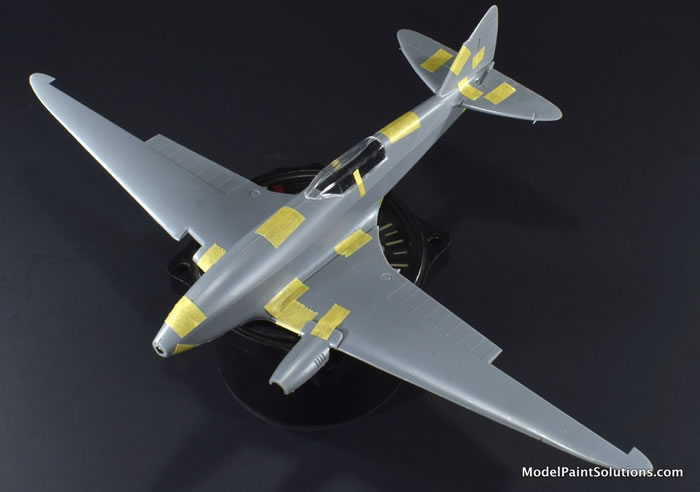
Such a build will force you to develop (or dust off) some handy building skills and require more forethought as to test fitting and sequencing. Once built, you will have a pronounced sense of accomplishment, more skills at the ready in your bag of building tricks, and a model that’s practically never seen at the local model show. That’s why I really like the old MPM/Special Hobby kits and why I’m loving this kit already.
In the Box
The rather large box is adorned with a very nice picture of Comet G-ACSS in flight. The grey sprues inside give the initial impression of old (first generation) MPM/Special Hobby. The sprue gates are thick, there’s a fair amount of flash, and the surface details are uneven at best: my kinda kit J
The kits layout and engineering are conventional. Assembly starts with the detailed De Havilland Gypsy Six R engines. Each cylinder head is composed of halves complete with PE push rods, associated engine accessories, and piping. Although nicely detailed, the majority of both engines will be hidden under cowls once assembled. Since just the first 1 or 2 cylinders will be seen through the front of the cowl, perhaps limiting assembly to just those is an option.
Next up is a somewhat complicated tubular frame for both main landing gear, which are then enclosed by the rear nacelle assemblies. Each assembled nacelle is then added to the wing center section. Of note is the nicely detailed PE center section flap that can be posed dropped.
Assembly of the cockpit/fuselage is next.
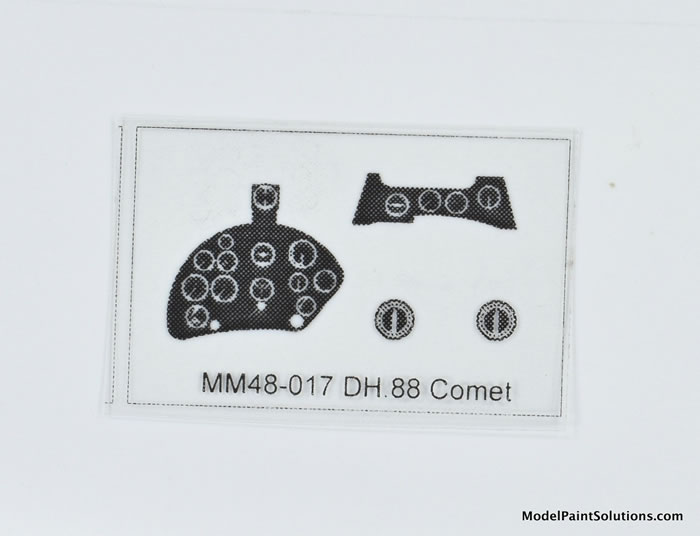
The nicely molded floor, seats, and other styrene parts are augmented with multiple pieces of PE including lap belts.
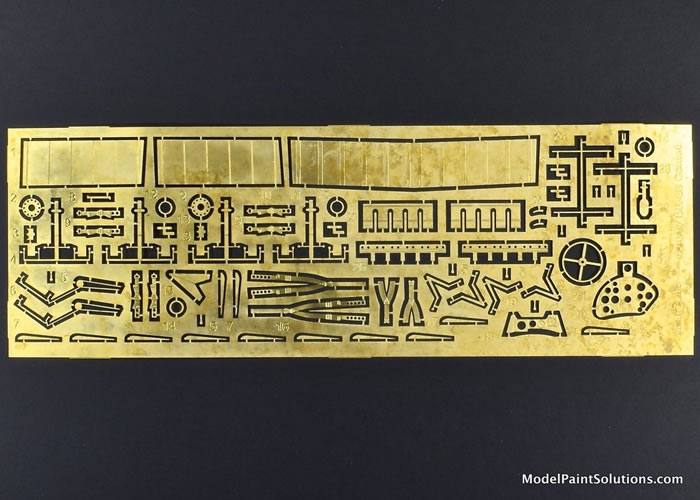
The assembled fuselage is offered up to the completed wing thereby completing the majority of the airframe. The single piece horizontal stabilizer/elevator assemblies are poseable as are the rudder and ailerons: nice
The canopy parts are nicely molded and sufficiently clear. Parts for posing the canopy open or closed are provided: something I always appreciate.
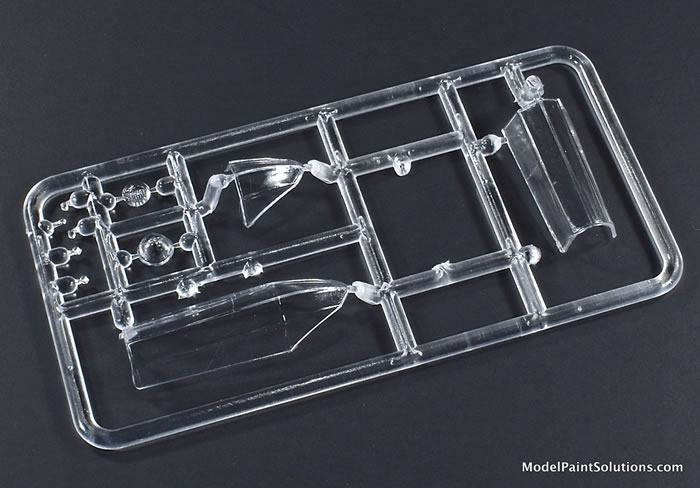
It wasn’t long before the parts cutters were out and plastic shards were flying. Just held together by tape, the major components sure look a lot like the curvaceous and svelte DH.88 to me eye. Man, what a pretty aeroplane. However, prepping a few components confirmed my initial impression: this kit will be a lot of work. There’s a fair amount of flash, no mounting pins on any of the major parts, and the mating surfaces are crude. This all adds up to a lot of test fitting/trial and error during the build. As an example, just insertion of the horizontal stabilizers into their slots required extensive reshaping and filing of all parts involved. Once assembled, additional work will be required to clean up panel lines and fillets that are misaligned. In addition, the few scribed lines running the length of the fuselage and around the nose (aft of the nose light) are both uneven and misaligned requiring filling and re-scribing. Par for the course, two wicked sink marks inboard of the horizontal stabilizers will have to be filled as well. And I’m just getting started……..
Color and Markings
The decal sheet, by Mikro-Mir, is crisply printed with good registration and color density.
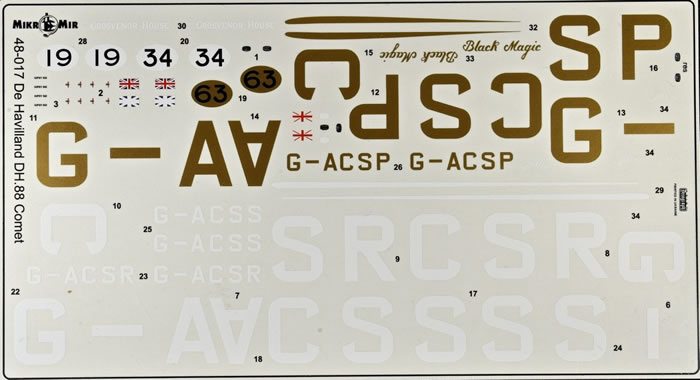
Markings for three schemes are provided as follows:
-
G-ACSR: Overall green with white lettering.
-
G-ACSP: Overall black with gold lettering.
-
G-ACSS :Overall red with white lettering.
I like this kit! I’ve wanted a 1/48 DH.88 for a long time and everything needed to make one is in this box but be aware, this is not a kit for beginners or those used to a diet of Tamigawas. This is the quintessential “limited-run kit” and will require a fair amount of work and patience to be built. That said, the overall shape looks good, the detail is sufficient for the scale, and the result will be one good-looking model for sure. Recommended!
Now go paint something!
Kit purchased by reviewer, again.
For more on this review visit Modelpaintsolutions.com.
Review Text and Images Copyright © 2020 by John Miller
Page Created 19 March, 2020
Last updated
19 March, 2020
Back to HyperScale Main Page
Back to Reviews Page

|
Home
| What's New |
Features |
Gallery |
Reviews |
Reference |
Forum |
Search